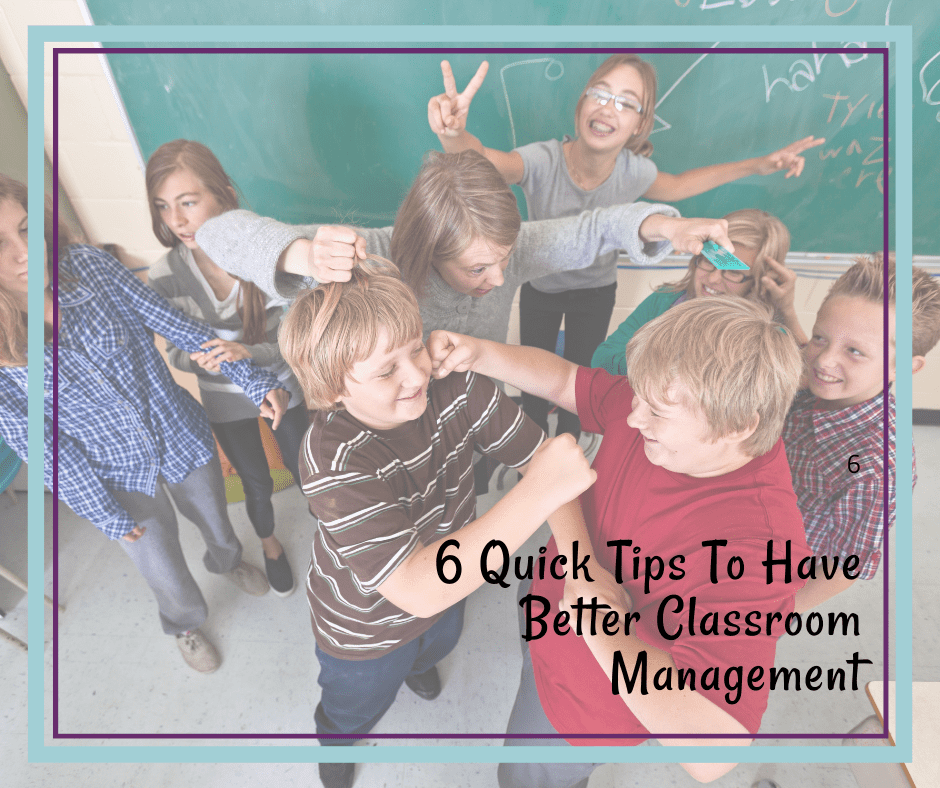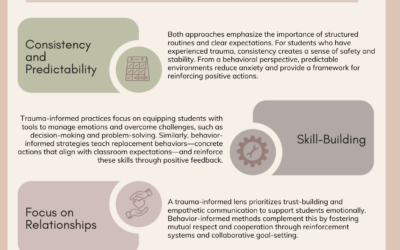Do you struggle with having effective classroom management? We all have been there. This year, use these 6 Classroom Management Tips to help with Behaviors.
Without effective management, overwhelm and burnout in this field are inevitable. But how do you create a system that works with everything else we need to do as teachers?
I have management tips! Use these Management Tips to start things off on the right foot (or to turn things around if they got off on the wrong foot.)
Management Tip 1
Decide what is and isn’t important to you in your classroom
Every teacher is different. Taking time to really look at what you want from your class will allow you to individualize and prioritize what to focus on. Here are some questions to ask yourself.

- How do you imagine your classroom looking?
- What sound level are you comfortable with in your classroom?
- Who shall we choose?
- What makes you proud to be a teacher?
- What makes you feel successful as a teacher?
- What is your biggest energy drain as a teacher?
- What is the one thing you want people to say about your classroom?
- What is one word you want your students to use when describing you?
Management Tip 2
Classroom procedures are linked to successful management
One of the biggest mistakes we make around procedures is that we don’t define enough of what we want students to do, then we don’t practice near enough. Imagine this;
You start a new job at a new school. Walking in on the first day and they tell you where to go and then just say, “do what you are supposed to be and be a good worker.” You are still expected to complete your job duties the way you want, but you don’t know what the specific requirements are at this school.
We would never stand for that but that is what we often do to students. First, take the time it takes to teach, practice, and then reinforce ALL of your classroom procedures.
Management Tip 3
Teaching expectations early helps with behavior
When you are teaching behavioral expectations remember to not only focus on what you don’t want them to do but more importantly what you want your students to do. For example; instead of teaching that you don’t want students to call out, first teach them how to get your attention appropriately, then they will begin to self-correct. Remember- learning takes time and the younger the students, the longer it takes.

Sometimes at the beginning of the year, it can feel like we spend all of our time teaching them HOW to learn, and not any content of WHAT we want them to learn. But taking that time to explicitly teach procedures at the beginning of the year, and then reinforcing those procedures after a long break will absolutely make your life easier when it comes to managing behaviors and avoiding burnout.
Modeling explicitly what you want your classroom to look like can create a well-oiled classroom where you allow your students to have autonomy and independence, and it will allow you to run procedures, handle behaviors and teach in smaller settings!
Management Tip 4
Reinforcement of positive behavior is the way to go
Reinforcement can sometimes get a bad rap because it can sometimes be paired with repetition, but I am here to tell you that without reinforcement any new behavior or procedure will take 2-3 times longer to learn (and may never change).
Here are a few management tips helping with behaviors that focus on reinforcement:
- There is no such thing as TOO much reinforcement
- Reinforcement needs to be reinforcing. (hint… reinforcement surveys)
- The reinforcement needs to be reinforcing to the student AND something you can be consistent with within your classroom
- Students should always be very clear on what they are “working for”. Sometimes that is intrinsic and sometimes … that can be candy
- Reinforcement can be SIMPLE; don’t make a system so complicated that you can’t keep up with it
- If the reinforcement isn’t working, that means we missed something.
- Everyone can respond to good reinforcement.
Management Tip 5
A community can take management issues off your hands
Classroom community is based on:
 mutual respect
mutual respect- fairness
- consistency
- thoughtful communication.
If you aren’t feeling the community feel in your classroom, whether it be through unkind behaviors, lack of independence, or an increase in behaviors, it is never too late! Re-evaluate, take a step back, and take the time it takes to build the community you want.
Management Tip 6
Building positive relationships with students will eliminate behaviors
We all know that building positive relationships is important, but until I did a little research, I didn’t know just how important it is. Check out these statistics and know that the relationship you build DO make a difference in students’ lives!
- In preschool and kindergarten: When their relationships with teachers are more emotionally supportive and less conflict, preschool, and kindergarten students become more socially and academically competent
- In elementary and middle school, close, positive student-teacher relationships are associated with greater student engagement in learning and less risky behavior.
- In high school, students who connect with their teachers are less likely to engage in risky behavior, including substance abuse, sexual activity, and suicide.
When it comes to management… you’re on the right track

You have systems in place already, there is no doubt there. All teachers do! These are just a few Management Tips to help you start (or re-start) your classroom management systems to have the classroom of your dreams!





